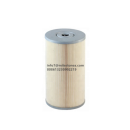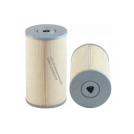15607-1530 use for Hino
| Dimensions | |
| Height (mm) | 219 |
| Outside diameter (mm) | 122 |
| Inner diameter(mm) | 17 |
| Weight & volume | |
| Weight (KG) | ~0.7 |
| Package quantity pcs | One |
| Package weight pounds | ~0.7 |
| Package volume cubic Wheel Loader | ~0.007 |
Cross Reference
| Manufacture | Number |
| HINO | 15607-1350 |
| HINO | 15607-1531 |
| HINO | 15607-1351 |
| HINO | 15607-1532 |
| HINO | 15607-1530 |
| BOSCH | 0 986 AF0 329 |
| SAKURA | O-1310 |
| ALCO | MD7023 |
| AMC | HO628 |
| VIC | O621 |
With the exception of electric vehicles, all other cars (including your hybrid) have an oil filter. Regarding routine maintenance, the engine oil and oil filter are items that need to be replaced more often than anything else on the vehicle. Yes, even your tires. There has always been a debate as to how often this is necessary, and there always will be a debate because, well, it depends. A general rule of thumb is 5,000 miles between oil changes but this will vary based on vehicle age, usage, and manufacturer requirements.
how often to change oil filter

What Does an Oil Filter Do?
From complex climate control systems to one-time-use face masks, filters are utilized everywhere and have one purpose: stop things from getting to the other side. These things can be anything from large dust bunnies to particles of a few microns, depending on what is being protected. Because of this, filters are designed similarly by combining multiple layers of paper, fabric, and/or other materials to stop certain particulates from passing through.
In an automobile, the oil filter captures these contaminants and prevents them from circulating through the engine. Without an oil filter, dirt and other particles much smaller than a strand of hair can and will freely travel into the engine assembly and cause damage due to clogs and other debris. If the engine parts can’t move, neither will the vehicle.
Oil filters don’t just manage waste but also maintain oil flow. That being said, filters can only absorb a finite amount of pollutants. Once an oil filter is saturated, its efficacy is lost and, thus, you have an unprotected engine.
How Often to Change Oil?
Like everything vehicle related, your mileage will vary with regard to how often to change your oil. The frequency is based on a number of factors (and not what the local drive-thru oil change shop sign says). The age of the vehicle, road conditions, mileage, and your driving habits all play a role in how often maintenance is required.
For most car owners, following the manufacturer’s recommended oil change interval will suffice, which is generally around 5,000 miles. Also, many newer vehicles come with built-in maintenance reminders. If you’re unsure as to whether to follow a mileage rule or calendar schedule (if you drive less than the annual average of 13,500 miles), checking the oil-life monitor is a safe bet and, if available, can usually be found within your instrument panel settings or under a vehicle maintenance/service/profile menu on a touchscreen display.
Owners of older vehicles can do a simple visual check of oil level and cleanliness every month. The small divot near the dipstick tip will signify recommended oil level. If the oil mark is too low, feel free to top off. But if the oil color is too dark, that indicates dirty oil and time for an oil change.
If you frequently drive in harsh weather and road conditions, you’ll be scheduling more service stops regardless. Because the vehicle and engine are working harder, the oil change interval will be more frequent and lean more toward the 3,000 to 5,000-mile markers. Owner’s manuals will list “severe driving conditions” as frequent short trips of less than 10 miles, stop-and-go driving in extreme weather, long-distance trailer towing, track driving, and driving regularly on rough, uneven, and/or salty roads.




